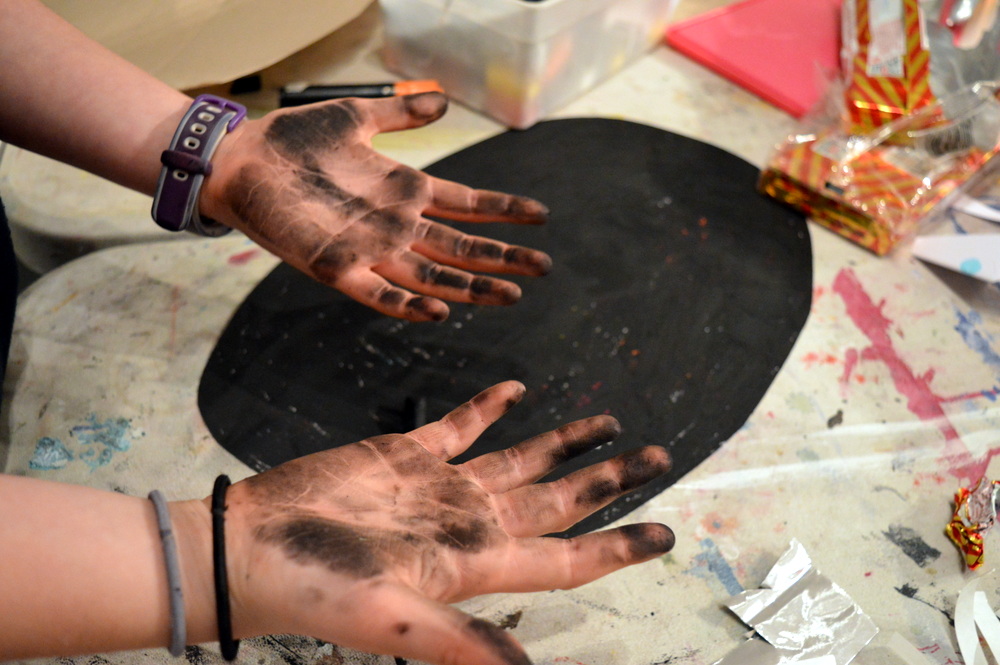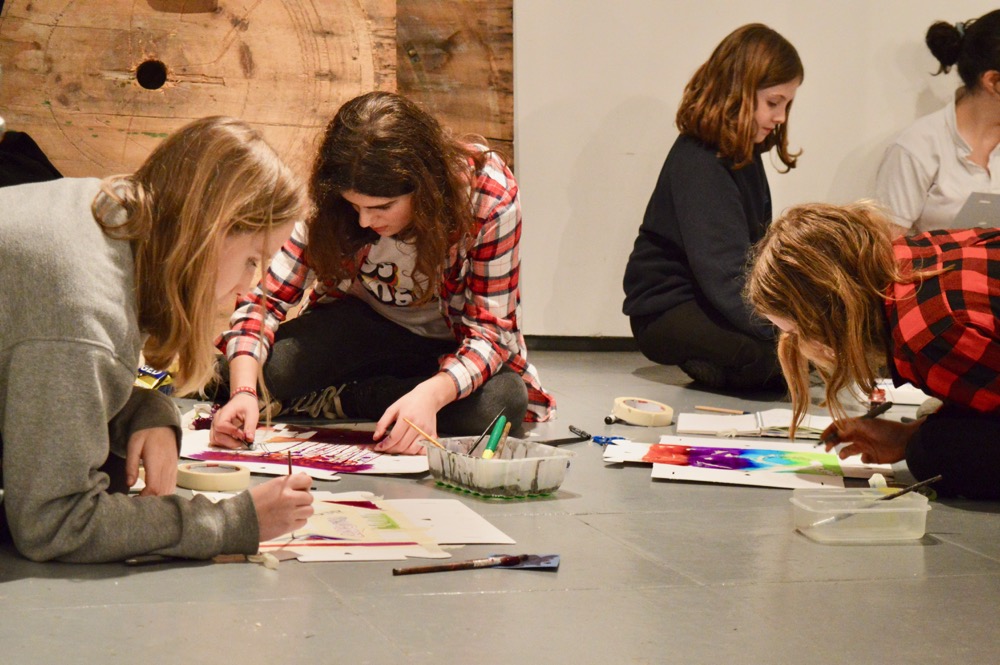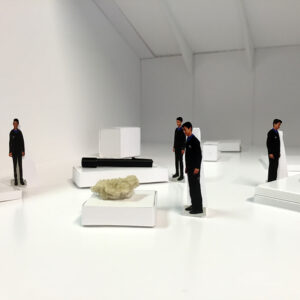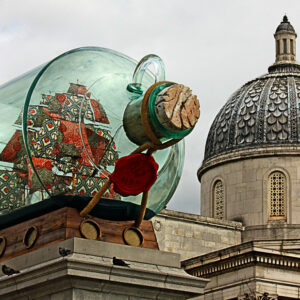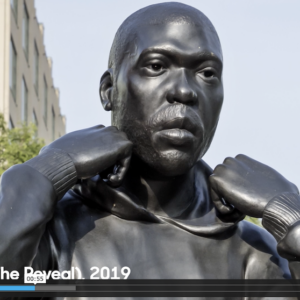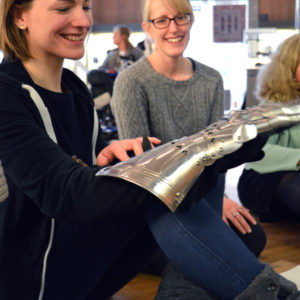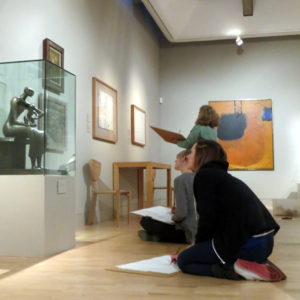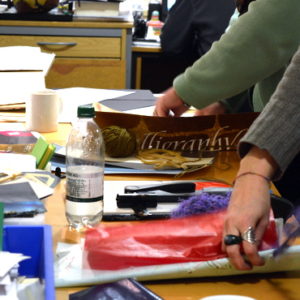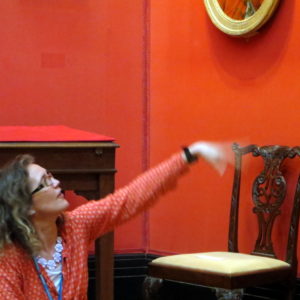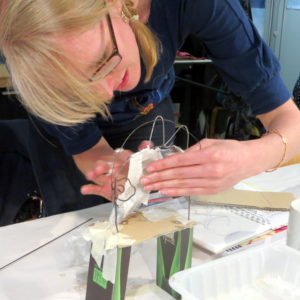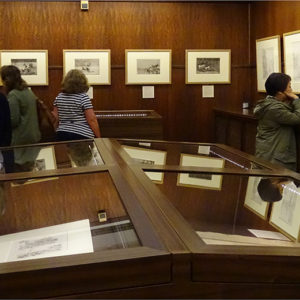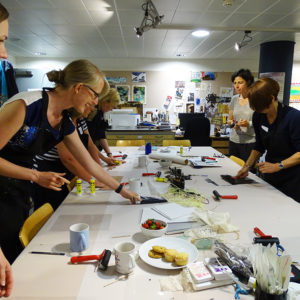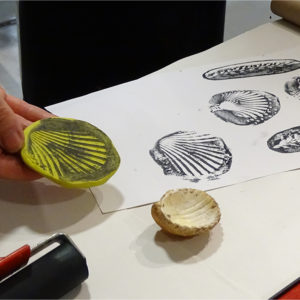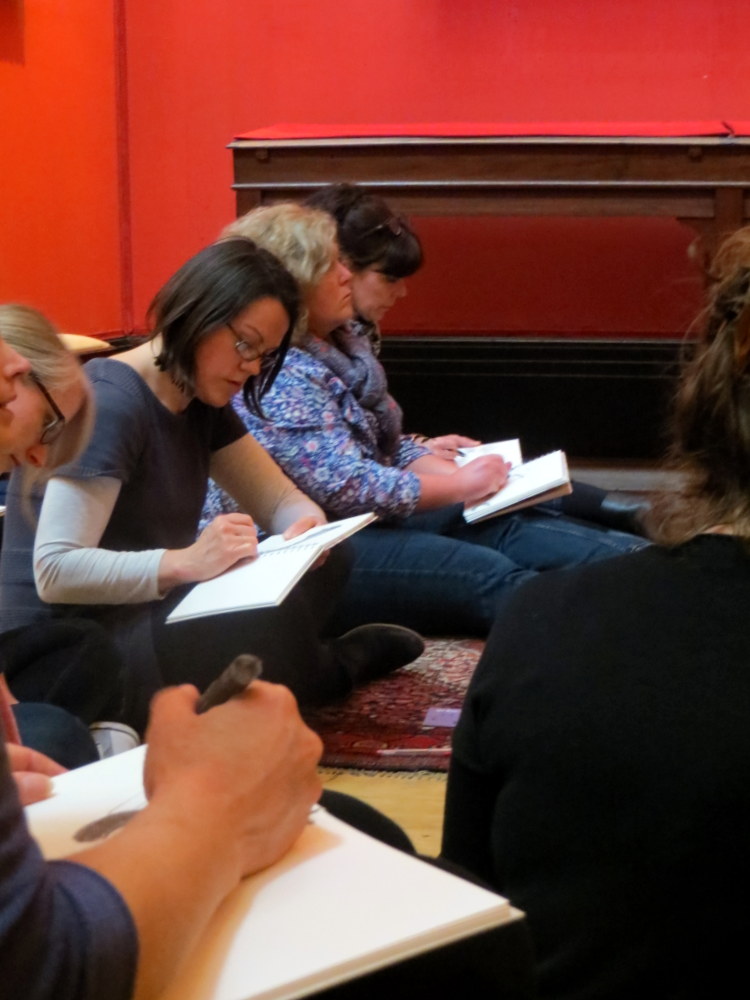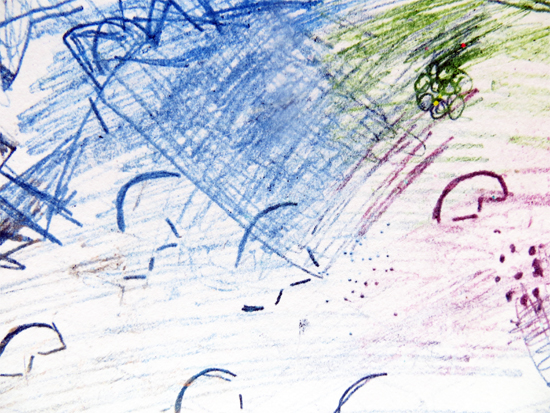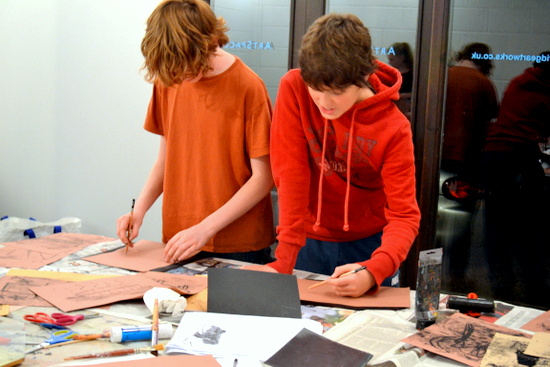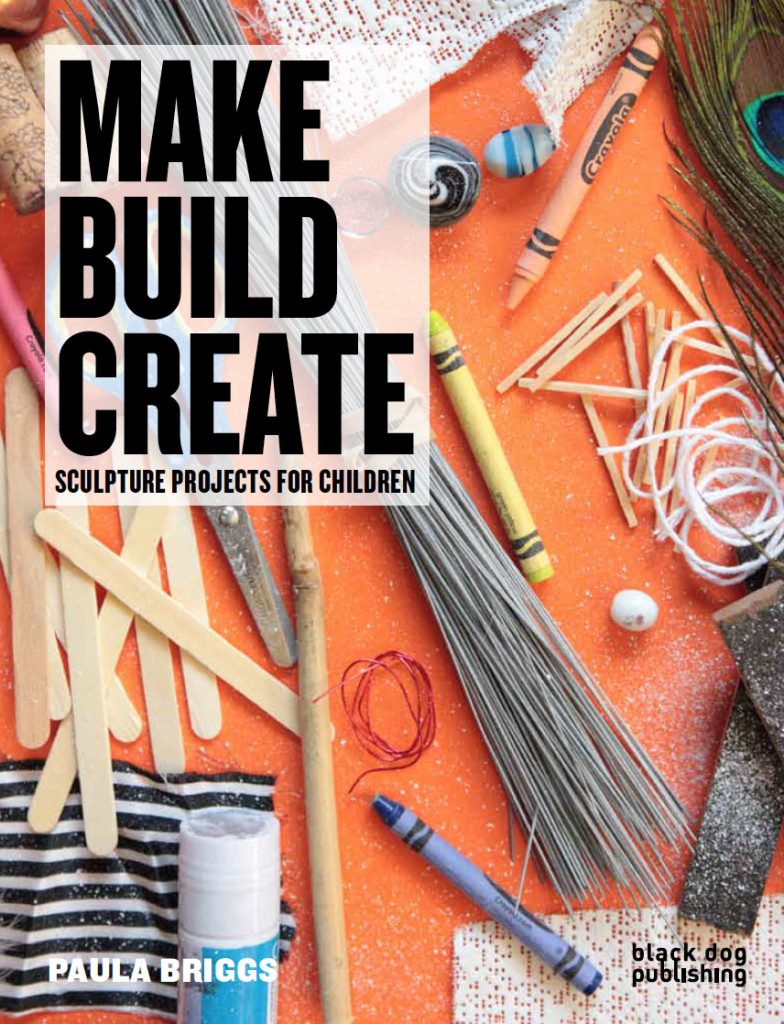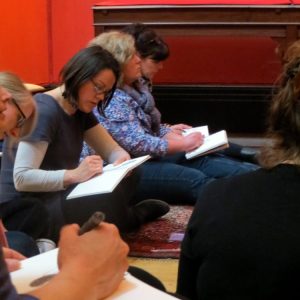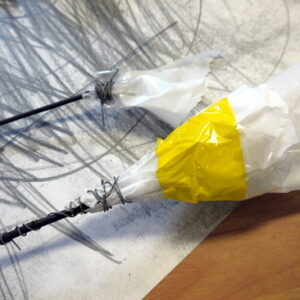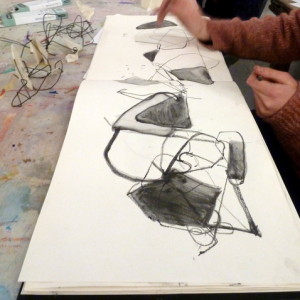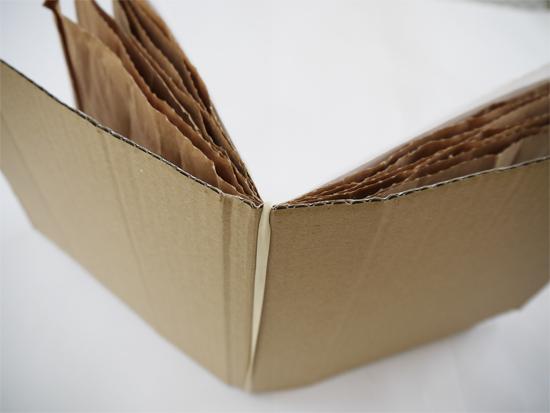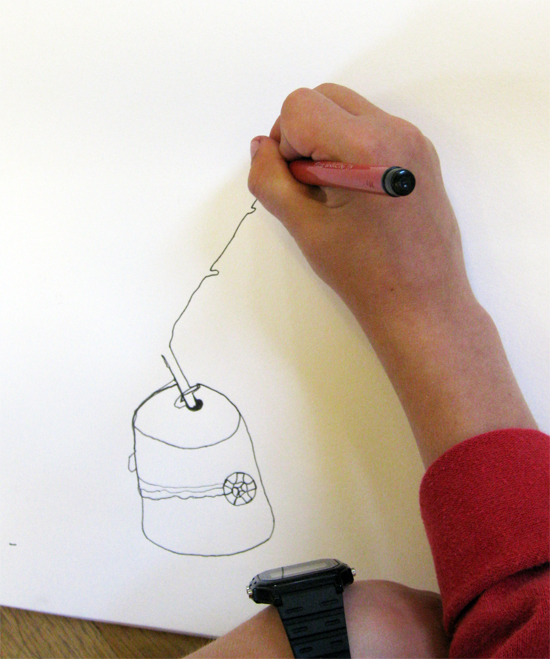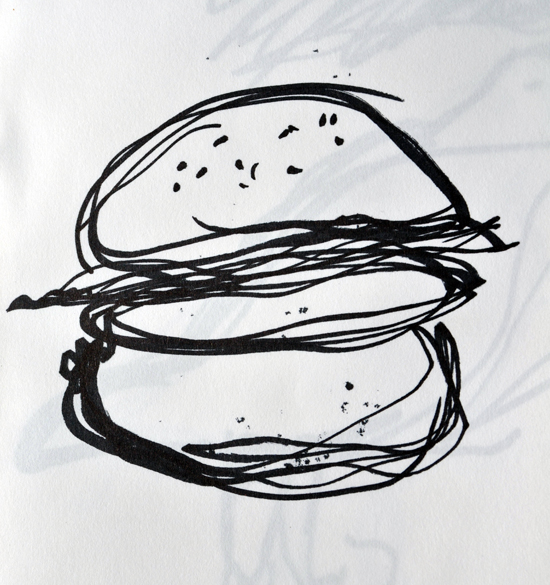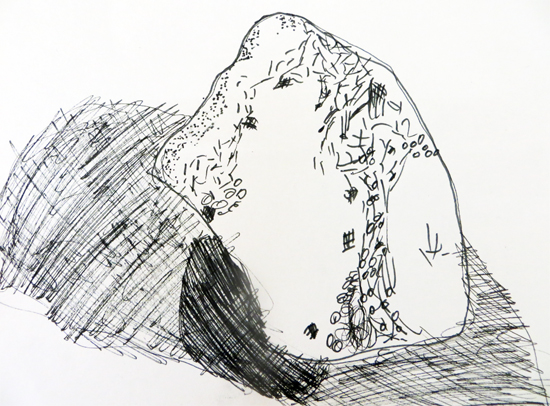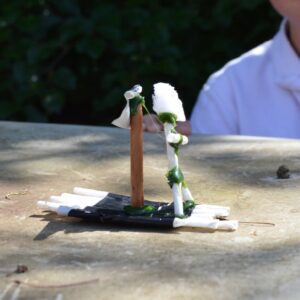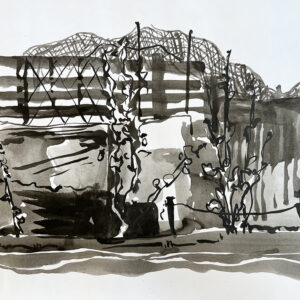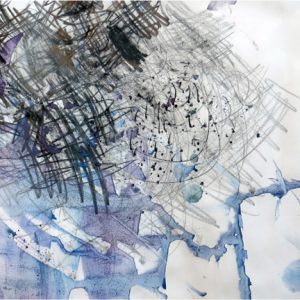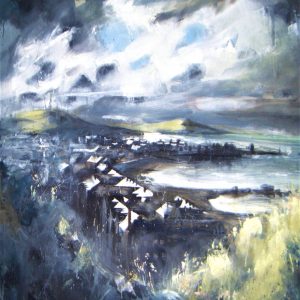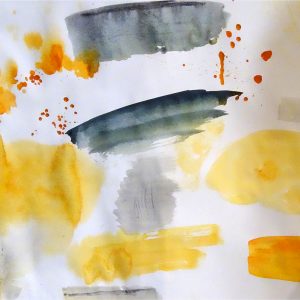By Jan Miller
This resource is part of a collection called Teaching Art to Year Three.
The project shared below was primarily a 3D project which developed design and making skills over five sessions.
After studying a painting in the National Gallery “Penelope with the Suitors,” (1509 by Pintoricchio), children commented that they might walk past a famous painting, if they were not familiar with the story.
They were asked how they would respond if there were puppets placed alongside the painting, to help children engage and interact with the image and the narrative. The children liked this idea, and the following puppets were designed by the children, who were given the challenge to “make the most attractive suitor puppet to impress Penelope.”
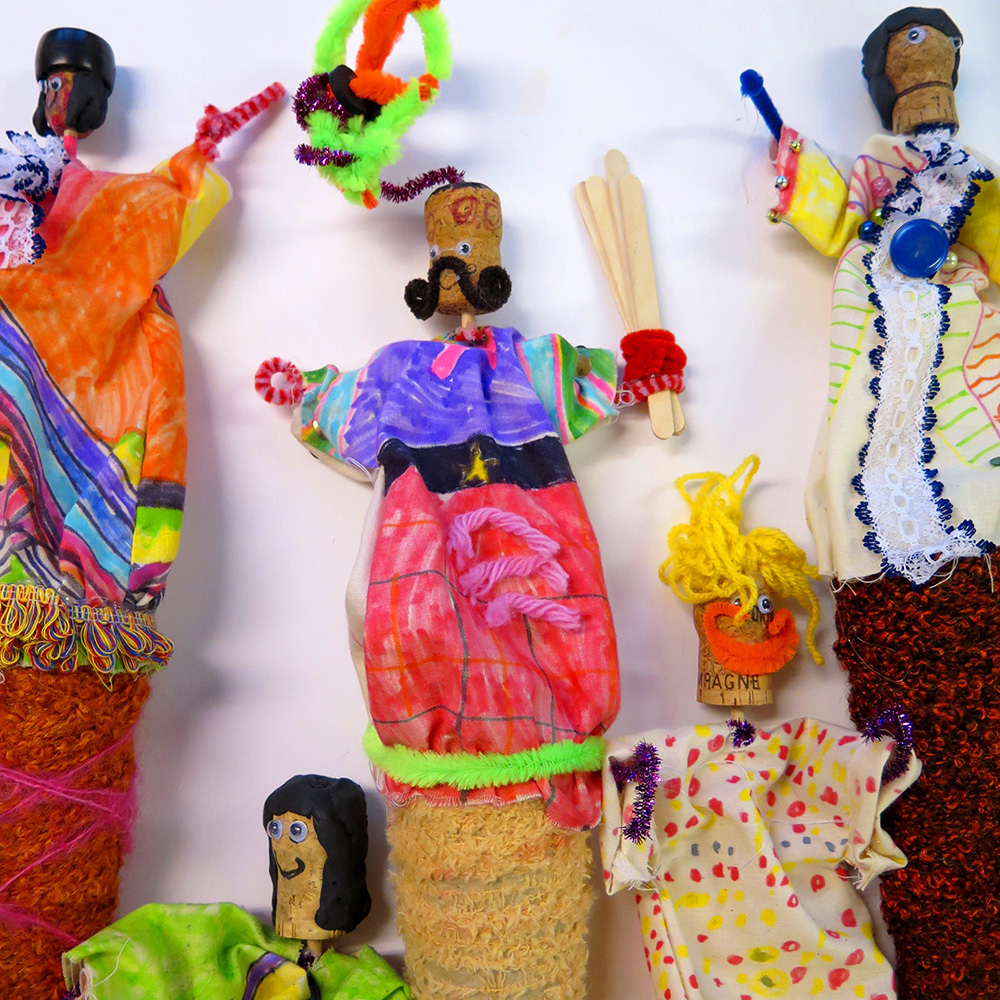
-
Who are the sessions aimed at?
The sessions were run with children aged 8.
The resources below can be used with children aged 7 to 11 (older KS 1 children and KS 2 children). -
Which areas of exploration and skills are covered?
• The children developed an understanding of working in an ordered process
• Designing for a purpose.
• Drawing and designing.
• Researching dolls and puppets
• Using templates.
• Working with wet and dry materials, spontaneously.
• Decision-making.
• Problem solving.
• Following a plan.
• Learnt about structures and mechanisms.
• Using construction techniques.
• Using wide range of tools, materials, processes.
• Appreciation of historic art.
• Using established art to inspire own work.
• Review, edit, adapt, modify and improve work throughout.
• Model making using reclaimed materials. -
How much time is needed?
Each of the five sessions below took one hour with the whole class. If you are working with a smaller group of children, the activities may take less time. The initial painting could be eliminated if wishing to reduce a session. Sketchbooks were available in all lessons with their plan in – although these were not used as a blue-print. Sessions could be extended by writing a list of materials needed or writing a step-by-step plan.
Variation, if time/materials are limited:
• Children could work in pairs,
• Teachers could do more prep, such as drawing a template for the design or drawing/cutting out the cloth t-shirt templates. We used calico but old shirts/tea towels, disposable table cloth etc. could be used.
• Staple or glue the T-shirts for quickness. Stitching, and even different types of functional and decorative stitching, could be taught to extend the project.
• They could tackle the making without prior designing.
• Stencils could be drawn and cut out directly from their drawings.
• We used cones donated from a weaver but they can be purchased from TTS quite economically or can be made from rolled and stapled laminated paper into a cone shape, with the t-shirt stapled to it.
• Paper sticks (TTS) are cheaper than dowelling and do not require cutting.
• A different painting could be used as stimulus.
• Beads from a car seat were used but anything such as a bottle top, plasticine, cotton reel -
Materials, Equipment & Preparation
Preparation
The stages of making were explained, and a basic model was made as a visual aid for those who are visual learners. Boxes of materials were available, mainly resourced by the children, and they used them independently as and when they needed. Our ‘bits box’ included ribbons, braiding, fabrics, buttons, wools, bells, beads, corks, sequins, foil sweet wrappers etc.Materials and Equipment
– A2 off-white sugar paper
– Charcoal
– Assorted inks/watercolours (Koh-i-Noor Anilinky Brilliant Watercolours- Set of 12 – £2.05 Seawhites)
– Big paint brushes
– Felt tip pens
– Offcuts of calico, strong disposable paper table-cloth, old shirts
– T-shirt template
– Cones from weaving looms (TTs sell a set of 33 reasonably), paper coffee cups or make own cones.
– Wooden dowel, paper sticks TTS, green garden sticks or thin bamboo
– Beads (we used an old beaded car seat)
– Scissors and glue
– Chenille – longer pipe cleaner or two smaller ones twisted together
– Corks, bottle tops
– Assorted plasticine
– Googly eyes
– Small amount of offcuts of wools, ribbon, braiding
Children were supervised when using the saw and cool melt glue gun. -
Where might the sessions be used?
• Classrooms (as part of art lessons or workshop)
• After school art club or AG&T group.
• Community groups (i.e. Scouts and Guides)
• Gallery, Museum or Art Organisation workshops -
Extension
• Write materials list or step-by-step plan to develop literacy links.
• Write and illustrate the story with their character puppet in – they could take photographs of their puppet and incorporate into their drawings.
• Film the animation of children operating them and telling a story.
• T-shirts can be stitched, for keen and able students; this can be over the glue to ensure it is secure or the t-shirt can be temporarily stapled and stitched. Running stitch and chain stitch, using embroidery thread, can be both decorative and functional.
• Buttons can be sewn on, pom-poms made, fimo necklace added.
• Felt legs and shoes could be added to dangle from the bottom of the cone- so he could be operated from behind a table.
• Props, to hold, could be made such as fans made from lolly sticks, swords, candles, bow and arrow and eagle etc.
Week 1 Painting the Character
Taking inspiration from 15th century costumes, children designed their own suitor. Most drew more than one in the lesson. Charcoal was used directly, and the children were encouraged to fill the length of the A2 paper. Thick and thin lineweight was considered.
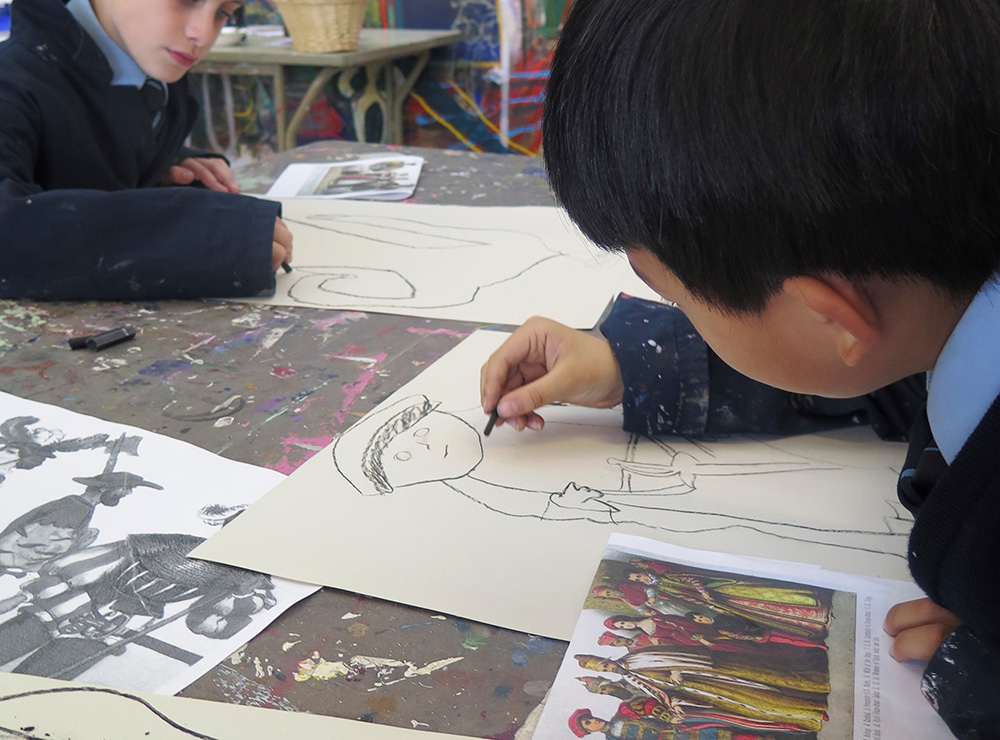
To access all content, I would like to join as…
AccessArt is a UK Charity and we believe everyone has the right to be creative. AccessArt provides inspiration to help us all reach our creative potential.
